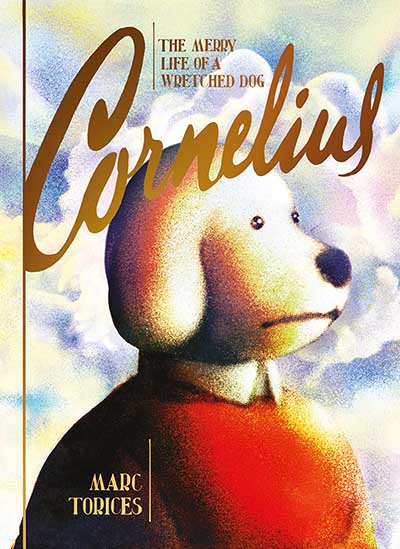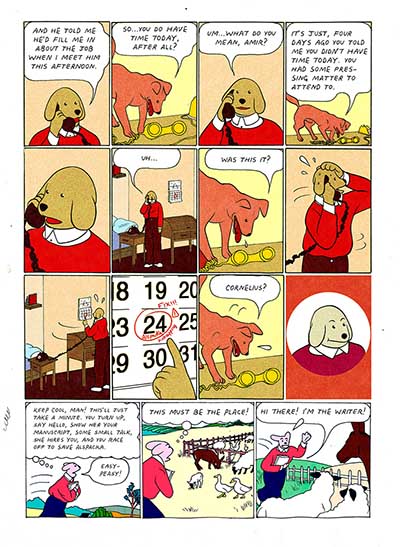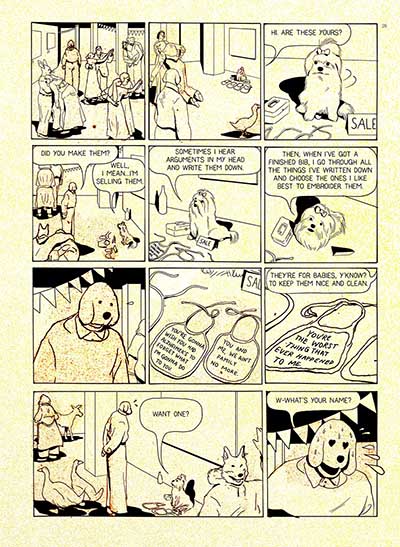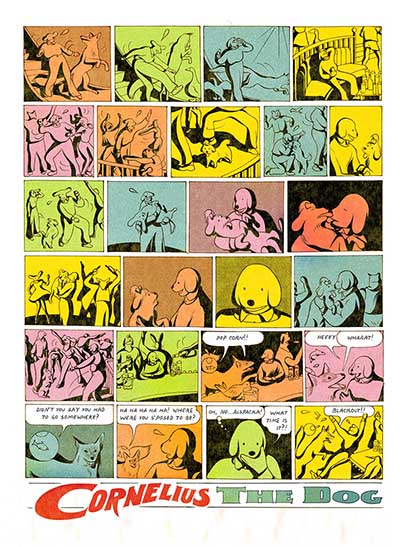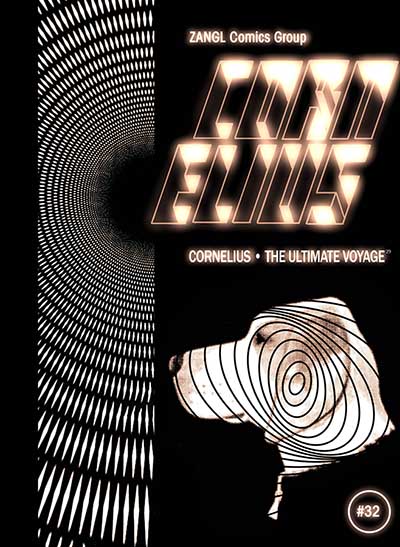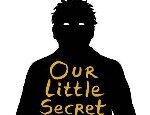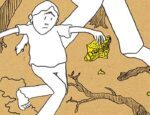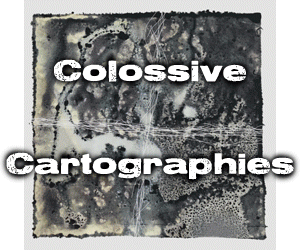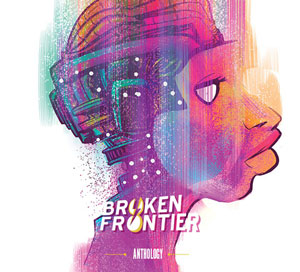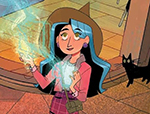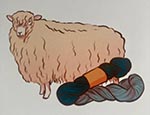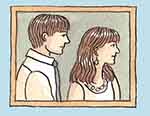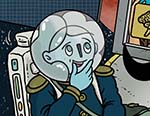Is this really the first of what are meant to be 40 volumes? Is Cornelius an iconic comic that has been around longer than most of us? Has the anthropomorphic dog made boys and girls the world over scream and cry? A casual reader of comics could be forgiven for accepting these claims as probable, because of the conviction with which Marc Torices presents them. For anyone who has dipped a toe into the vast history of comics though, it shows what the medium can become in the hands of a master.
One way of approaching a review of a book like Cornelius: The Merry Life of a Wretched Dog is to try and offer a precis of what it is about. This summary could include details about what Cornelius does (works as a janitor at a gym), what he dreams of becoming (a writer), what drives the narrative forward (his friend, the boss’s niece Alspacka, is kidnapped), and what happens after the incident (Cornelius hampers the investigation, has a few affairs, and does things that may or may not be illegal). Some of it makes sense, a lot doesn’t, but the whole is still greater than the sum of its sometimes-confusing parts.
While Torices indulges in a form of world-building here, he also creates a work that is almost metaphysical in its depiction of life. After a point, one ceases to question anything about what Cornelius is, what he is meant to represent, or whether anything he experiences is believable. All that matters is what the artist manages to evoke. There is laughter and absurdity, even grief, and it all contributes towards making Cornelius’s story human. It’s also why the plot soon ceases to matter. One is asked to suspend disbelief and tag along for a wild ride, which is what Samuel Beckett did, as well as Kurt Vonnegut, David Lynch and the Coen brothers.
Another thing that makes this book so compelling is the art, a relentless parade of styles that pay homage to the greats. This is sometimes done openly, and often in subtle ways that yield gasps of recognition. Some panels look as if they’ve been created by Tom Gauld, others by Dan Clowes, and the breadth of what is offered shows just how closely Torices has studied the artists who went before him.
It’s easy to see why the book took years to create, given the attention to detail. This is most obvious in the extensive notes, to try and make the comic strips seem older than they are. The idea of presenting it as an archive works, for the most part, but can also be a little overwhelming if one is in the mood for easy reading. Some of the gags don’t land, which is an expected risk when humour is being translated. And yet, to translator Andrea Rosenberg’s credit, ‘La alegre vida del triste perro Cornelius’ survives the shift from Spanish to English with its spirit intact.
Is it all meant to be a joke? Are there hidden layers of meaning? Are the stories meant to connect in ways that aren’t immediately obvious? Should we expect 39 more volumes? One guess is as good as the other. It’s what makes Cornelius: The Merry Life of a Wretched Dog open to multiple interpretations and repeated readings. Just like great literature has always done.
Marc Torices (W/A), Andrea Rosenberg (T) • Drawn and Quarterly, $39.95
Review by Lindsay Pereira





